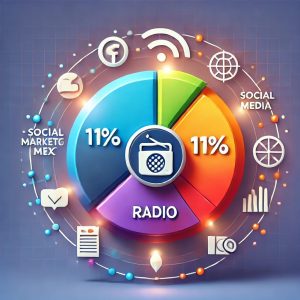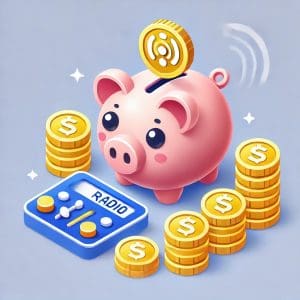News
Modest Radio Spend, Huge Returns? You Still Need a Good Ad
Mark Ritson and the 11% Claim

Marketing professor Mark Ritson delivered a keynote at the Heard 2024 Conference claiming:
Investing 11% in radio can double your campaign effectiveness
He goes further and states:
Campaigns with radio deliver stronger impact on brand awareness, product knowledge and help to build distinctive assets
Which is great news for the radio industry and producers of audio marketing and assets (including us). But dig only slightly deeper and it’s clear radio won’t automatically become as Ritson calls it, the ultimate sidekick.
You still need a good ad.
Excess Share of Voice
Ritson’s claim comes from a study he ran in collaboration with marketing consultant Rob Brittain and Commercial Radio and Audio (CRA). In investigating the effectiveness of radio they considered Effie Award entries from 2018 to now which they admit skews the data towards ad campaigns already considered particularly effective.
The key metric to determine success is what they label Excess Share of Voice (ESOV). This measures a brand’s marketing activity (their Share of Voice) against their share of category, with results seen to determine how much growth they can expect from their marketing. Put very, very simply it states having a bigger slice of the marketing pie than you have in actual sales should generate a revenue increase.
This is a positive as it essentially means even the smallest businesses can use the modelling to aim for similar results.
Marketing Theory vs Commercial Reality
But, but, but…
It’s not a guarantee of success.
Marketing theorists love discussing marketing theories, and the vast majority of research is undertaken by companies with huge budgets, big campaigns, in-depth data, consultants, and even academics. If you run an SME or a start-up, you won’t have that amount of information. You’re probably focussed on running your business on a day-to-day level.
The beauty of the findings is that you can still apply them to your brand. Look at them as a roadmap in how to allocate and use your marketing budget, no matter the size.

You Still Need a Good Radio Ad
While the study’s results push radio’s case, remember this is only as part of a wider marketing spend (audio alone can be effective, but that’s not what this study measures). And while Ritson and colleagues are open about the ads they measured being literally judged as effective, these represent just a small percentage of all the audio marketing being produced.
Which gives you an opportunity. A smart ad, crafted to aid recall will generate better results for your mixed media campaigns.
To leverage radio’s ability to extend reach, aum make your brand memorable: a hook, a jingle, a vocal technique, an audio mnemonic…you don’t need a huge budget for any of this. But to generate results in line with the model, consumers must be able to easily link it to your wider marketing.
Start With Radio
One suggestion to keep your campaign cohesive: start with a radio script. A good 30-second radio commercial requires clarity and a direct message, which you can then use to guide the direction of your marketing, linking it all together. From online, to out of home, and print, when you create a genuinely memorable and effective radio ad you have a blueprint you can come back to again and again.
With a strategic and coherent campaign message across mediums, you’re putting your business in the best position to increase the recall factor for consumers. So Professor Ritson’s claim that 11% of your marketing budget spent on radio can double your campaign’s effectiveness is a compelling reason to evaluate – or re-evaluate – your marketing focus.
Which in turn, should boost the ROI it generates.
If you’d like help with crafting your radio ads and seeing how audio can work for you, at The Voice Market we can help. Just contact us here.
Article – Wade Howland 2024
